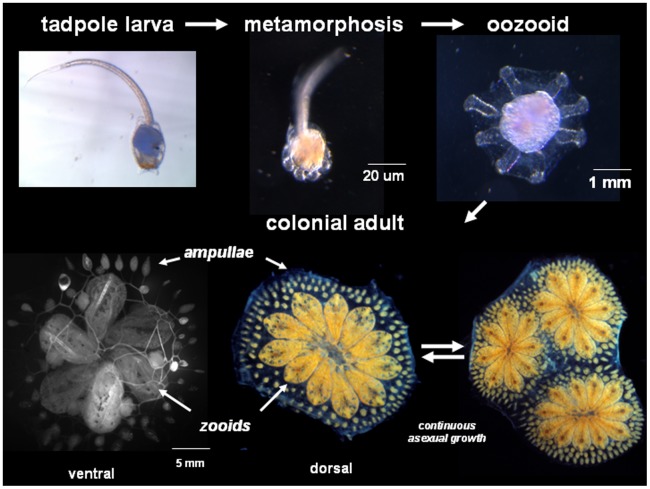Figure 1.
Life history of B. schlosseri: Top panels show the chordate tadpole larva immediately following hatching, which after a short free-swimming phase settles onto a suitable substrate, then undergoes metamorphosis into an invertebrate body plan, called an oozooid. This is followed by a weekly, coordinated asexual budding cycle which gives rise to a colony of genetically identical individuals (called zooids, bottom middle), and linked by a common vasculature. Zooids are filter-feeders which organize themselves into star-shaped structure called systems (bottom middle), and a genotype can consist of multiple systems (bottom right). Bottom left shows the vasculature visualized following the injection of fluorescent dye. The vasculature runs throughout the colony, and at the periphery terminates in finger-shaped protrusions called ampullae.

